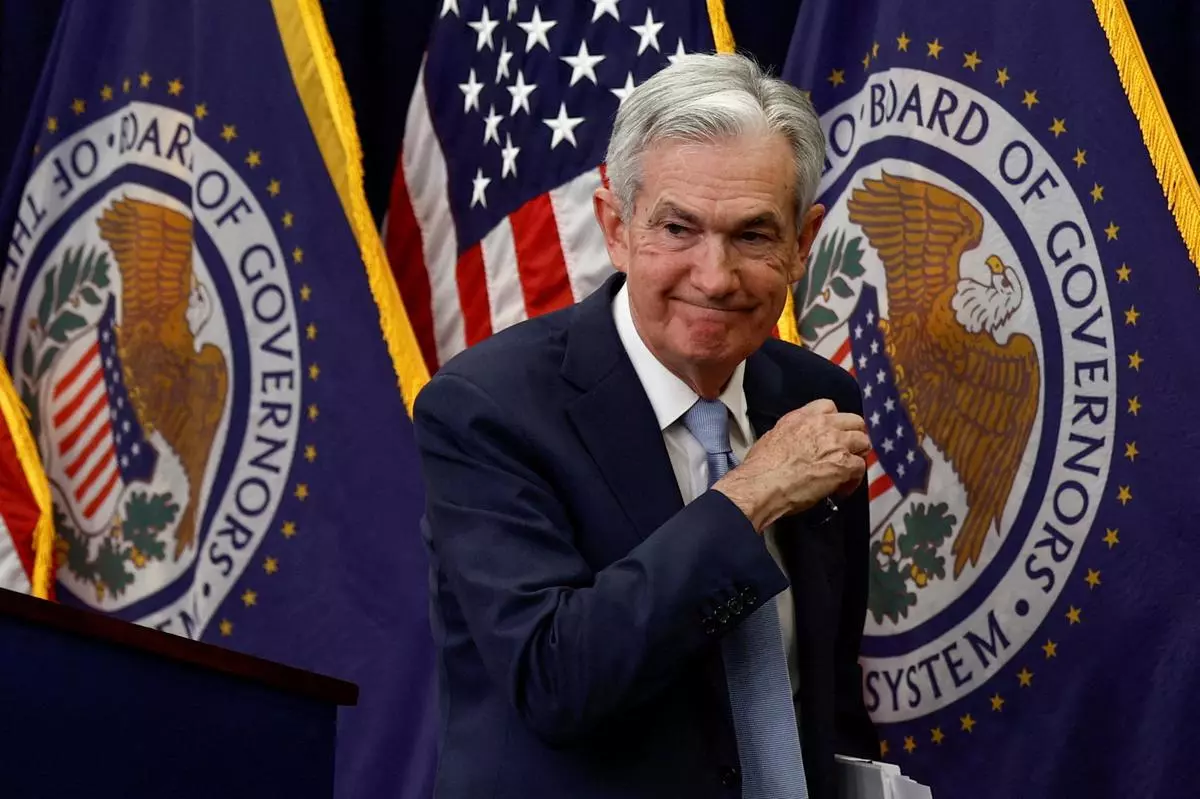Commodities
Powell patter, UK shock, FedEx warning

A look at the day ahead in U.S. and global markets from Mike Dolan
The Fed chair has a tricky message to communicate.
Jerome Powell’s testimony to Congress later on Wednesday will flesh out how the Federal Reserve chief rationalises last week’s pause in its 15-month rate hike campaign – even though the central bank insists on further tightening ahead.
Powell’s colleagues on Tuesday stressed again they would stay the course until inflation is back to its 2% target.
Futures markets suspect only one more quarter-point rise next month is left in the tank – rather than the two hikes Fed policymakers stitched into their outlooks last week.
But even though headline U.S. inflation fell to 4% in May for the first time in more than two years, there are some more signs the underlying economy is picking up steam.
U.S. single-family housing starts surged in May by the most in more than three decades while permits for future construction also climbed, according to data released on Tuesday. The numbers tallied with the jump in the National Association of Home Builders/Wells Fargo Housing Market index in June to its highest since July last year.
U.S. Treasuries held steady, however, with two-year yields hovering about 4.7% into Powell’s set piece. Two-year ‘breakeven’ inflation expectations embedded in the bond market are back just above 2%.
U.S. stock futures also held the line, after a two-day consolidation of June’s 5% surge in the S&P500 – still on course for its biggest monthly gain since January and the longest streak of monthly gains since the summer of 2021.
The dollar was also steady against most major currencies – with a drop in China’s yuan to its lowest level of the year an exception as China’s monetary policymakers swim against the hawkish central bank tide elsewhere with this week’s rate cuts.
But even as U.S. investors welcome the domestic disinflation picture more generally, overseas anxieties persist – most obviously in Britain.
UK inflation defied expectations of a slowdown and held at 8.7% in May, while ‘core’ inflation jumped above 7% for the first time since 1992. The numbers heap pressure on the Bank of England a day before it is predicted to raise interest rates for the 13th time in a row.
Money markets now see a 50-50 chance the BoE hikes rates by as much as 50 basis points to 5% and pencil in a peak rate of 6% by next March.
Amid all the UK bad news – include data showing a rise in public sector net debt above 100% of national output for the first time since 1961 – the higher inflation and rate trajectory failed to lift the pound. Sterling recoiled sharply from recent highs against both the dollar and euro.
In corporate news, FedEx shares dropped almost 3% overnight after a profit warning. The shipping firm, which is slashing costs to protect profits as demand wanes, said ongoing “demand challenges” prompted its plans to ground 29 more aircraft in the fiscal year that started on June 1.
Electric vehicle makers were supercharged, however.
Rivals Rivian Automotive and Tesla rose more than 5% on Tuesday each after Rivian announced it had agreed to adopt Tesla’s charging standard.
Meantime, China unveiled a $72 billion tax break for EVs, while European Union data showed EV sales jumped 71% in May.
Events to watch for later on Wednesday:
* Federal Reserve Chair Jerome Powell testifies to House Financial Affairs Committee.
* Senate Banking Committee hearing on nomination of Adrian Kugler to Fed Board, also on Philip Jefferson’s appointment as Vice Chair and a second term for Lisa Cook
* Chicago Fed President Austan Goolsbee and Cleveland Fed chief Loretta Mester speak
* U.S. Treasury auctions 20-year bonds
Commodities
Oil prices rise; U.S. crude inventories plunge, Russia-Ukraine truce eyed
Commodities
India’s Reliance to stop buying Venezuelan oil over US tariffs, sources say
Commodities
Oil prices climb on Venezuela supply worries

 Forex3 years ago
Forex3 years agoForex Today: the dollar is gaining strength amid gloomy sentiment at the start of the Fed’s week

 Forex3 years ago
Forex3 years agoUnbiased review of Pocket Option broker

 Forex3 years ago
Forex3 years agoDollar to pound sterling exchange rate today: Pound plummeted to its lowest since 1985

 Forex3 years ago
Forex3 years agoHow is the Australian dollar doing today?

 Cryptocurrency3 years ago
Cryptocurrency3 years agoWhat happened in the crypto market – current events today

 World3 years ago
World3 years agoWhy are modern video games an art form?

 Commodities3 years ago
Commodities3 years agoCopper continues to fall in price on expectations of lower demand in China

 Economy3 years ago
Economy3 years agoCrude oil tankers double in price due to EU anti-Russian sanctions























